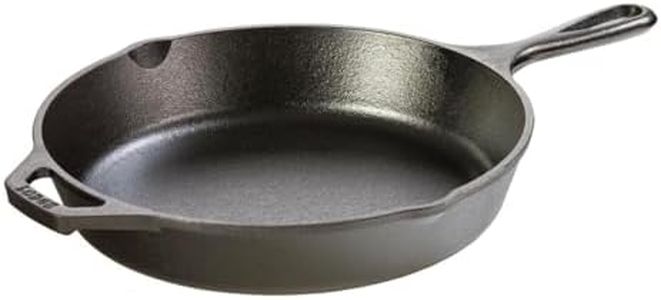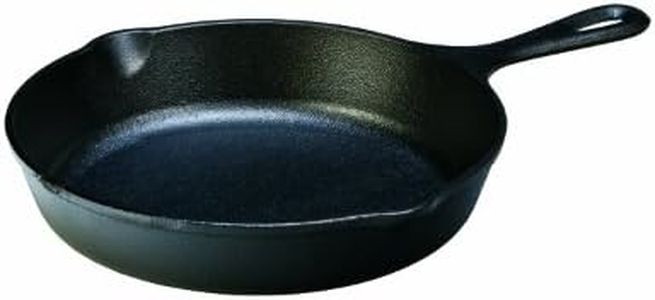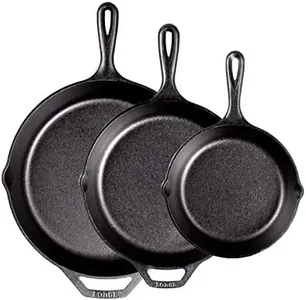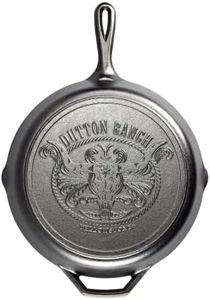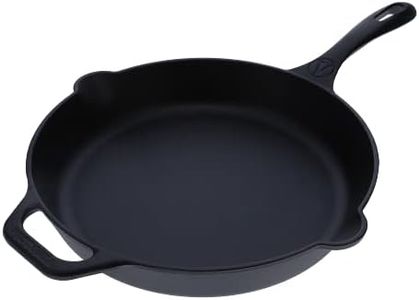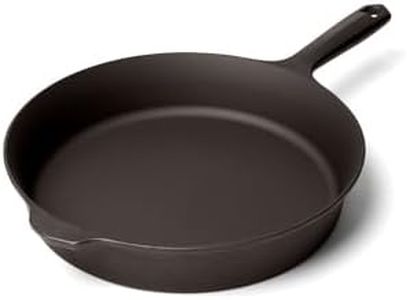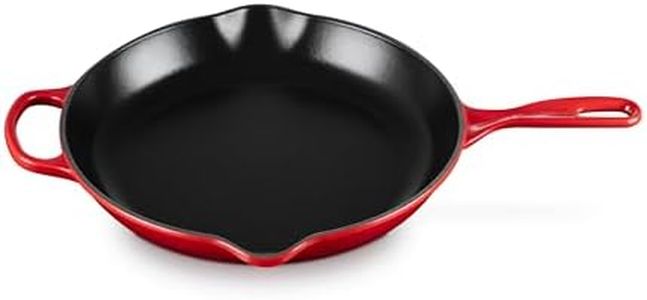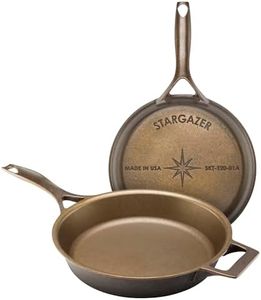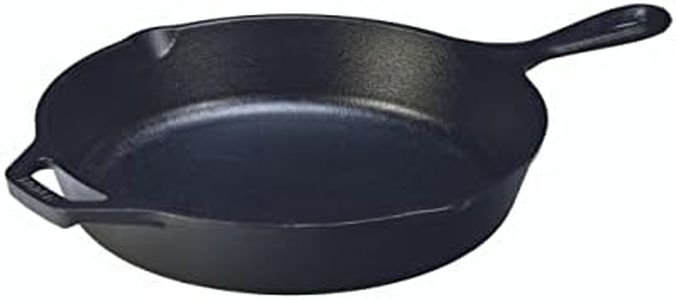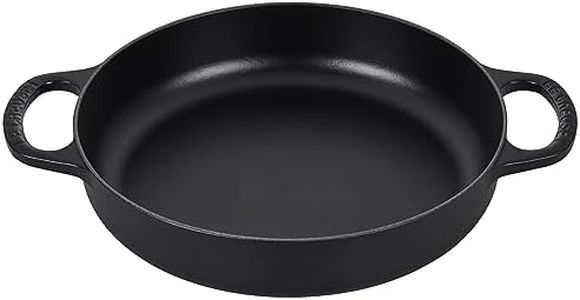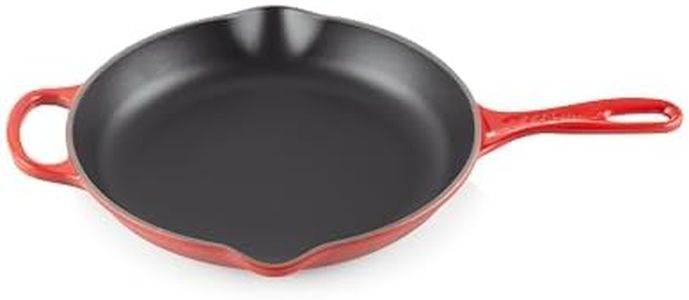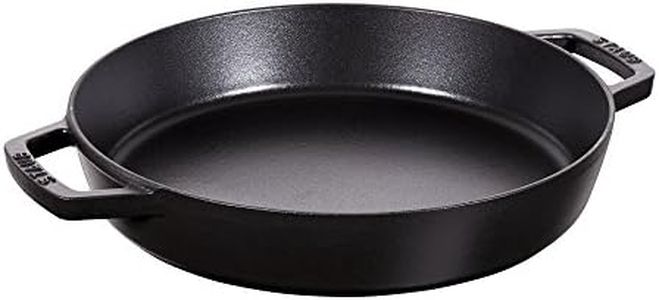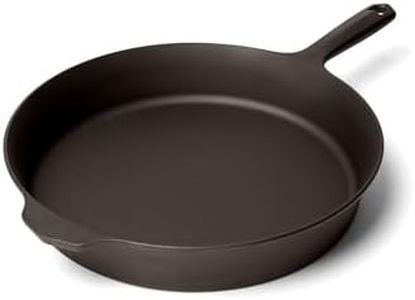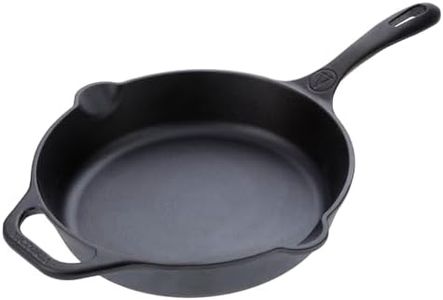We Use CookiesWe use cookies to enhance the security, performance,
functionality and for analytical and promotional activities. By continuing to browse this site you
are agreeing to our privacy policy
10 Best Cast Iron Frying Pans
From leading brands and best sellers available on the web.Buying Guide for the Best Cast Iron Frying Pans
Choosing a cast-iron frying pan can feel daunting with the different options available, but a good pan can last for generations if you select the right one for your needs. When shopping, focus on how you plan to use the pan—do you want it for searing steaks, baking cornbread, or general everyday cooking? Think about your cooking habits, your kitchen space, and how much maintenance you are willing to perform. Understanding the key features will help you make a confident choice that fits your lifestyle.Size (Diameter)Size is all about how much food you want to cook at once. Cast-iron frying pans come in various diameters, usually measured in inches. Small pans (6-8 inches) are great for single servings or small portions, like frying an egg or toasting spices. Medium pans (9-10 inches) are versatile for most households and ideal for cooking meals for two or three people. Large pans (11-12 inches or more) are perfect for families or when cooking bigger meals, such as searing several steaks or preparing a large frittata. Choose the size based on your usual batch size and the number of people you cook for most often.
WeightCast-iron pans are heavier than other types of cookware, but weight can vary between brands and sizes. Lighter pans are easier to handle, especially when pouring or moving the pan, but may heat less evenly. Heavier pans can offer better heat retention and more even cooking but require more strength to lift and maneuver. If you have wrist or arm concerns, try holding different weights to see what feels comfortable. The right balance ensures you get the cooking benefits of cast-iron without making everyday use a struggle.
Surface Finish (Pre-seasoned vs. Unseasoned)Cast-iron pans can come either pre-seasoned or unseasoned. A pre-seasoned pan means it’s been treated with oil and heated at the factory, making it non-stick and ready to use out of the box. Unseasoned pans require you to build up a protective non-stick layer yourself, which can be rewarding but involves extra work. If you’re new to cast-iron or want something that's easy to start using, go for a pre-seasoned option. If you love doing things from scratch or have specific seasoning preferences, unseasoned might appeal to you.
Handle DesignHandle design affects how comfortable and safe the pan is to use. A longer handle stays cooler and offers better leverage but can make the pan harder to store. Shorter handles are less bulky but may get hotter during cooking. Some pans have helper handles—small grips opposite the main handle—which make carrying and moving the hot, heavy pan much easier. Think about how you'll move the pan, and look for features that match your grip comfort and storage needs.
Pour SpoutsMany cast-iron pans have small spouts on the sides for pouring off liquids or excess fat. These can be handy if you often make sauces, gravies, or fry foods where you need to drain oil. If you rarely pour liquids from your pan, spouts might not be important. For those who do, having double pour spouts (one on each side) is helpful for both left- and right-handed users.
Cooking Surface (Smooth vs. Rough)Older or premium pans often have a smoother cooking surface, which can help food release more easily and be simpler to clean. Modern mass-produced pans tend to have a rougher texture, which can still become non-stick with regular use and seasoning, but may take a bit longer to develop a slick surface. If you prefer a pan that’s easier to cook on from the beginning, look for a smoother interior. If you don't mind building up seasoning over time, a rougher surface can work just as well.
